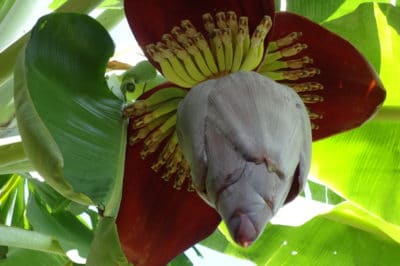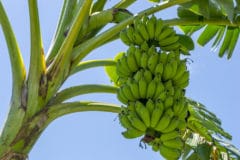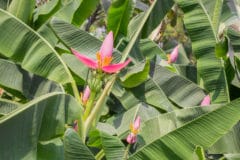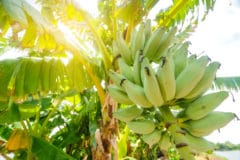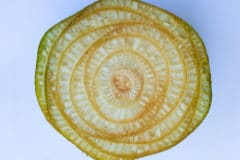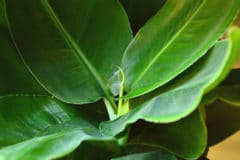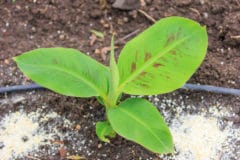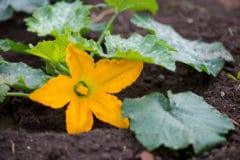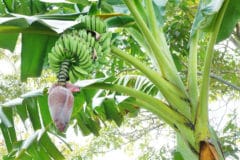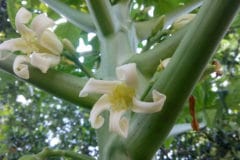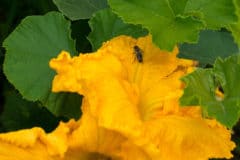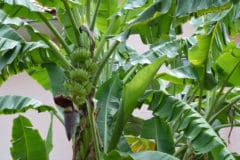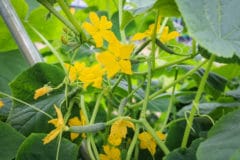The Inflorescence
Although called a tree, the banana is really a perennial shrub with a pseudostem composed of tightly packed leaves. The true stem grows inside the pseudostem and the part from which flowers develop – the inflorescence – emerges from the top of the pseudostem. The inflorescence arches out the top of the plant and hangs downward, with flowers hanging from the tip.
The Shape of a Banana Flower
Banana flowers can be quite large, depending on the variety. The flowers themselves are covered with several thick, fleshy bracts that look like large petals. As the true flowers open, the bracts lift away, exposing the interior of the actual flower. In some countries the bracts are used as eating or serving dishes, but otherwise have no use.
Three Flower Types
Many plants have either male or female flowers; some have both. However, banana have three different types:
- Female flowers – these appear first and are the flowers that will develop into bananas.
- Male flowers – although they produce pollen, it may be sterile. Pollen is not required for banana development.
- Hermaphrodite flowers – these have both male and female characteristics but do not develop fruit or produce pollen.
Banana Flower Colors
The banana flower is often quite spectacular. The outer bracts can be red, lavender or purple, and some are much darker, being maroon to almost black. The bracts have vertical ridges that may be lighter-colored or have what looks like a powdery coating. The actual flowers underneath the bracts are usually white to ivory in color, with yellow ruffled tips.
From Flower to Maturity
If you are growing bananas outside, the flowers will usually begin to appear in late spring or early summer. Male flowers will continue to appear after the banana fruits begin to develop, but no more bananas will form. You can cut off the flower stalk below the fruit if desired. Fruit matures in about four to six months.
Growing Edible Bananas
The typical grocery store banana can only be cultivated in the tropics. Other varieties will grow in temperate areas – USDA Zones 7 to 10 – and some will produce edible bananas. Some bananas are edible but insipid or have little flavor. Plantains, which are grown in many southern and southwestern states, are edible bananas that must be cooked before eating.
